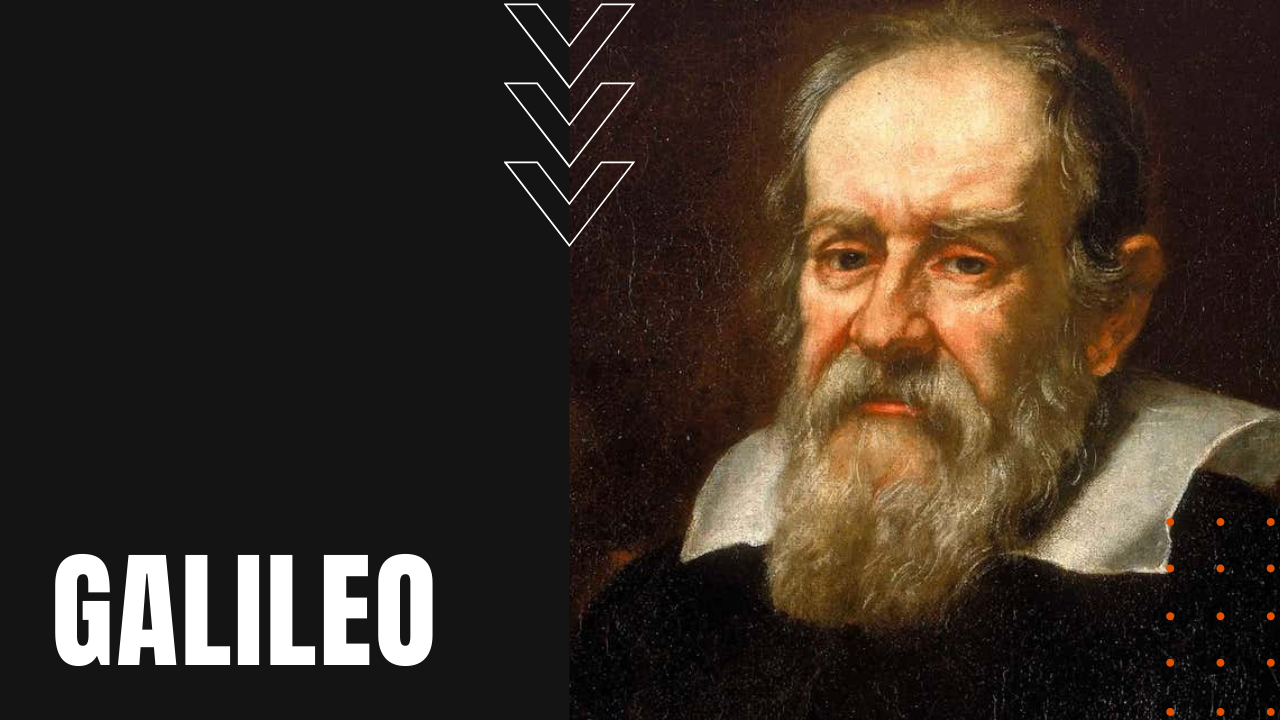Galileo: Math, Physics, Cosmology, Inventions, and House Arrest

Born in 1564 Pisa Italy, at age 16, Galileo Galilei entered the University of Pisa to study medicine, but after he found himself drawn to mathematics and physics, he dropped out of college before making his first discovery describing the rules that govern the motion of pendulums.
Before long, his growing body of work landed him the chair in mathematics at the universities Pisa and later Padua. Galileo built his first telescope in 1609, discovering four of Jupiter’s largest moons, while making observations on the surface of the moon and discovering new stars in the Milky Way Galaxy.
In an attempt to gain favor with the wealthy philanthropist Medici family, Galileo renamed Jupiter’s moons the “Medician Stars.”
Galileo vs. The Catholic Church
His observations into the near universe soon placed him at odds with the Catholic Church, when in 1616, the church placed Copernicus and his scientific argument for a heliocentric or sun-centered universe on its list of banned books, prompting Pope Paul the Fifth to summon Galileo to Rome, informing the scientist that he could no longer support Copernicus and his heretical beliefs in any public forum.
Galileo would again tangle with the church in 1632, after he published his “Dialogue Concerning the Two Chief World Systems,” which posed arguments for both sides of the heliocentric debate, and when he was again subjected to trial by the Roman Inquisition, was convicted of “vehement suspicion of heresy;” a charge that came with the threat of torture unless he recanted his beliefs.
His refusal to do so placed him under comfortable house arrest for the remainder of his life, before passing away on January 8th, 1642 after suffering from heart palpitations and a fever.
Galileo’s Legacy and Contributions
Galileo’s observations that all bodies accelerate at the same time regardless of mass or size paved the way for Isaac Newton’s codification of classical mechanics, while Galileo’s broad range of inventions—from compasses and scales to improved microscopes and telescopes—ignited fires under the disciplines of both astronomy and biology.
Known for innovative and thoughtful experimentation techniques, Galileo’s lifetime body of work helped move the scientific method into its modern form. In 1744, Galileo’s “Dialogue” was removed from the Catholic Church’s list of banned books, while later in the 20th century, both Pope Pius the 12th and Pope John Paul the 2nd issued official statements of regret for how the Church had treated Galileo, making Galileo Galilei a man of scientific discovery, well before his time.
